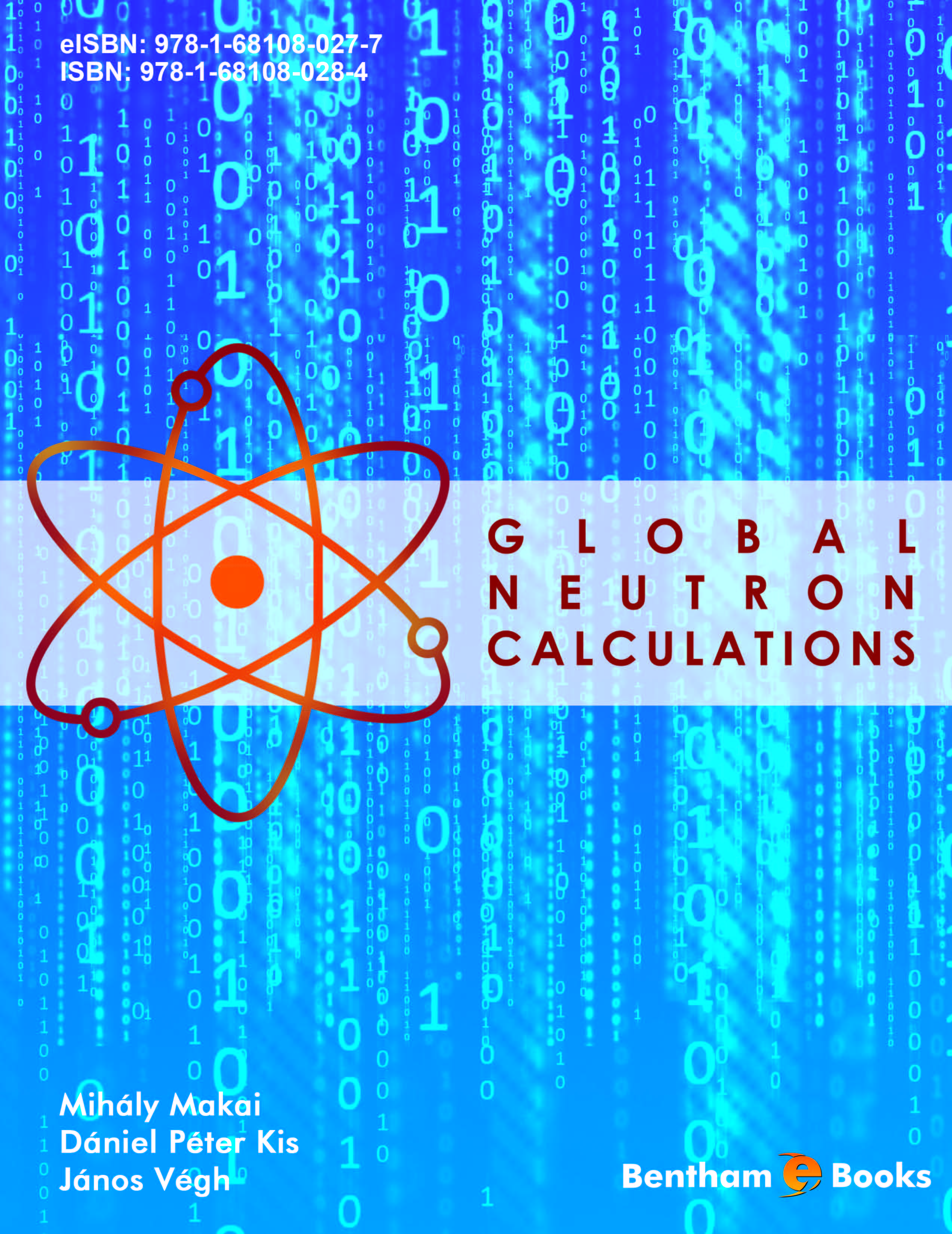Preface
The subject of the present work is the set of computational tools applied
in the description, operation, and control of man-made neutron multiplying
systems. Those systems may be used as neutron source, as various types of
research reactors, to study phenomena taking place in large-scale industrial
devices as with zero power reactors, or to produce energy in a power reactor.
The book aims at making the reader understand the main features of neutron
multiplying systems. Understanding is provided by a limited number of
fundamental physical models. In the models, a key point is the interaction
of neutrons with various nuclei, a question discussed in nuclear physics.
Once we are interested in the neutron population, those nuclear reactions
are classified from the point of view of neutron balance and a set of crosssections
1 is provided for every nucleus. The characterization of the material
requires more than specifying the XSs. The number of reaction per unit
time, the so called reaction rate, depends on the density of the nucleus and
the relative speed which depends upon the thermal motion of the nucleus.
A further essential component of a neutron multiplying system is the geometry.
Cross-sections, geometry, material composition and temperature fully
Once the geometry and material composition are known, we can write down
equations which govern the neutron distribution in space, time, and neutron
energy. Step-by-step we build up a sequence of models intended to master
the technique of designing, measuring and controlling neutron multiplying
systems. Simple models are utilized to introduce basic terms and concepts;
more sophisticated models are needed to take account of practical situations.
As the reader will see, none of these are describable simply. The XSs
depend on the neutron energy and exhibit a large variety of energy dependence.
Most multiplying systems are heterogeneous, thus the geometry is far from being simple. This is the reason for the extended use of numerical
models in the solution of the equations.
The text uses an extended amount of mathematics and physics. From the
former, the reader may need expertise in linear algebra, numerical methods,
and statistics. From the latter, some nuclear physics, mechanics, and statistical
physics are the prerequisites. In a limited book it is impossible to
touch upon the underlying mathematical and physical details. To fill that
gap, textbooks are recommended to collect deeper knowledge on each specific
subject.
The structure of the book is the following. Chapter 1 is a survey of the
problems discussed here in connection with reactor calculations. The six
subjects are treated only briefly, the emphasis being placed on the relations
among the subjects. Each subject will be unfolded in a separate subsequent
chapter. The first subject, in Section 2 discusses the components of the reactor
models and their relationships. Chapter 2 lays down the theoretical
background of the reactor calculation. Chapter 3 deals with problems that
can be solved exactly. Chapter 4 is a survey of approximate solution methods.
The approximate methods in Chapter 5 are organized into a calculational
model to solve specific problems of reactor physics. The next Chapter
6, is devoted to a generally utilized approximation, diffusion theory. Some
of the approximation relies on the spectral properties of the neutron distribution
which is the subject of Chapter 7. The result of the approximation
methods is a system of equations that we solve by the numerical methods
discussed in Chapter 8. In reactor physics, the temporal behavior of the reactor
is of primary importance, and this is the topic of Chapter 9. Chapters
10-11 deal with specific applications of the afore-mentioned reactor physical
models. Chapter 12 gives a brief overview of nuclear reactor types
applied for electricity generation. Some special problems are summarized
in the Appendices.
The models we present have been selected to correspond to the practical
tasks involved with neutron multiplying systems: design, measurement design
and processing (instrumentation and control), and operation.
The authors are grateful to Paul Zweifel and Yuri Orechwa for their advice
and editing the text. If any error has remained, it is the fault of the authors.
Collaboration with Dr. Ferenc Wettl in LaTeX problems is gratefully acknowledged.

